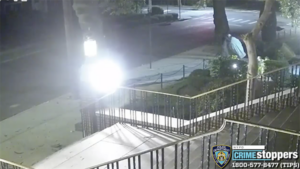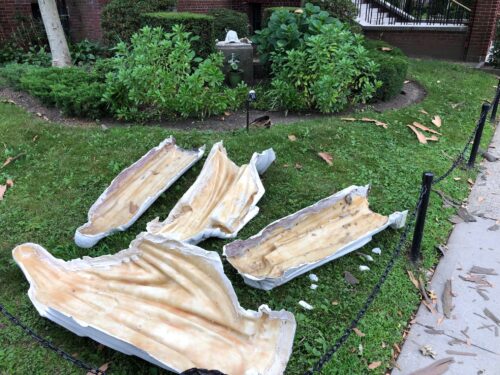By Erin DeGregorio, Paula Katinas and Emily Drooby
WINDSOR TERRACE — The former executive director of The Catholic Youth Organization (CYO) in the Diocese of Brooklyn is accused in two civil lawsuits of sexually abusing underage boys when he was a CYO basketball coach at St. Joseph’s Church in Astoria in the 1990s.
The lawsuits, filed in New York State Supreme Court in Queens in May, were made public on July 14.
In response to the lawsuits, The Diocese of Brooklyn released a statement saying the diocese’s Independent Reporting Line received an allegation of inappropriate behavior by Robert Caldera on Oct. 14, 2020, and quickly acted on it.
“This was the first allegation ever made against Caldera to the diocese. As is the policy of the Diocese of Brooklyn for all employees, Caldera had undergone comprehensive and periodic background checks. Immediately, on October 15, 2020, Caldera was placed on suspension from his position and restricted from all areas at CYO and any other parish, school, or diocesan property,” the statement reads.
On Oct. 19, 2020, a second allegation involving Caldera was called into the reporting line.
“The diocese has provided outreach to both claimants and has been in contact and cooperated fully with the NYPD Special Victims Unit,” according to the statement.
On April 14, 2021, the diocese terminated Caldera, according to the diocese.
“The protection of children is the most important priority for the Diocese of Brooklyn, and our policies ensure that we inform authorities when we receive allegations of inappropriate behavior. The Diocese of Brooklyn has fully complied with law enforcement authorities and will continue to do so in this matter. The diocese cannot provide any specific details and the status of the investigation into the allegations as they are part of an ongoing investigation that involves law enforcement,” the statement read.
The plaintiffs are identified in court documents only by their initials, J.K. and M.T., due to the sensitive nature of the accusations.
In addition to Caldera, the defendants named in the lawsuits are the Diocese of Brooklyn, St. Joseph Church, Catholic Charities Community Services, and the Archdiocese of New York.
The lawsuit filed by M.T. also lists St. Joseph Catholic Academy as a defendant. M.T. was a student at St. Joseph’s School and played basketball for CYO, court documents said. Caldera was employed as a basketball coach for the CYO and for St. Joseph’s School. St. Joseph’s School is the former name of St. Joseph’s Catholic Academy.
The plaintiffs claim Caldera repeatedly abused them and are seeking monetary damages, both compensatory and punitive, although the amounts are not specified.
The lawsuits were filed under the New York Child Victims Act, a law that extended the time for people who were victims of child sex abuse years ago to file suit against sue abusers.
The Child Victims Act, passed in 2019, raised the statute of limitations for civil cases brought by people who say they were sexually abused as children up until they reach the age of 55. Victims over the age of 55 are allowed a one-year grace period to file their claims.
The law also includes what is called a “look-back window” — a one-year period for adult victims who had previously been prohibited by the statute of limitations, to file suit. In 2020, Gov. Andrew Cuomo signed an executive order extending the deadline to file lawsuits to Aug. 14, 2021, and cited the pandemic for the extra time allowance.
Caldera grew up playing CYO basketball and baseball at St. Joseph’s, where he attended elementary school. He later served as the parish’s athletic director for baseball and basketball before taking over as its parish athletic representative (PAR) and overseeing the entire sports program there.
Caldera was St. Joseph’s PAR for 17 years before accepting the job as CYO director in 2013. He also previously coached and taught in schools throughout the diocese — including teaching physical education, junior high school social studies, English, and religion at St. Gabriel in East Elmhurst; teaching English and coaching freshman basketball and baseball at St. John’s Prep in Astoria; and teaching at Our Lady of Sorrows in Corona.
The Tablet’s calls to Caldera for comment went unanswered.

